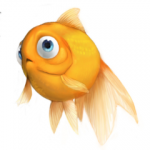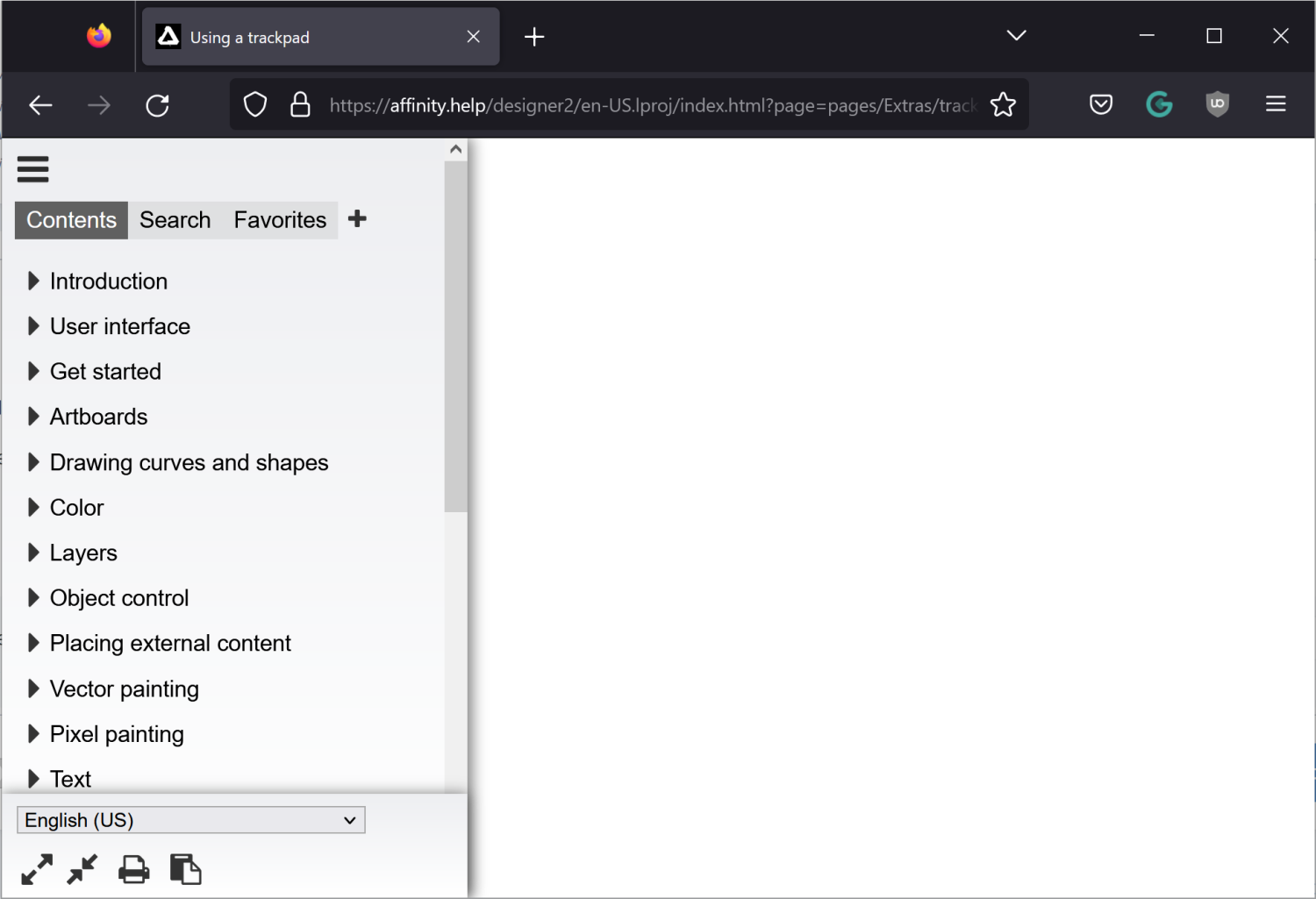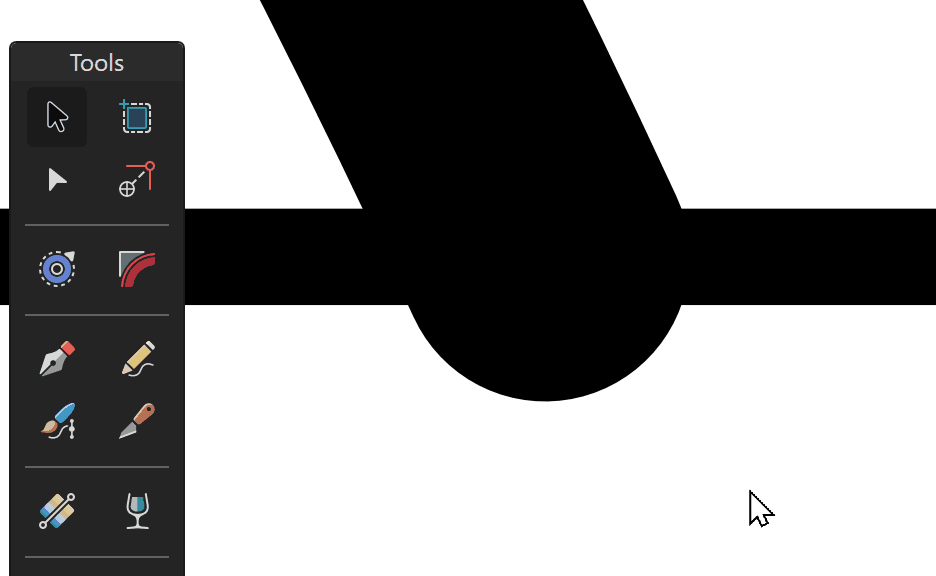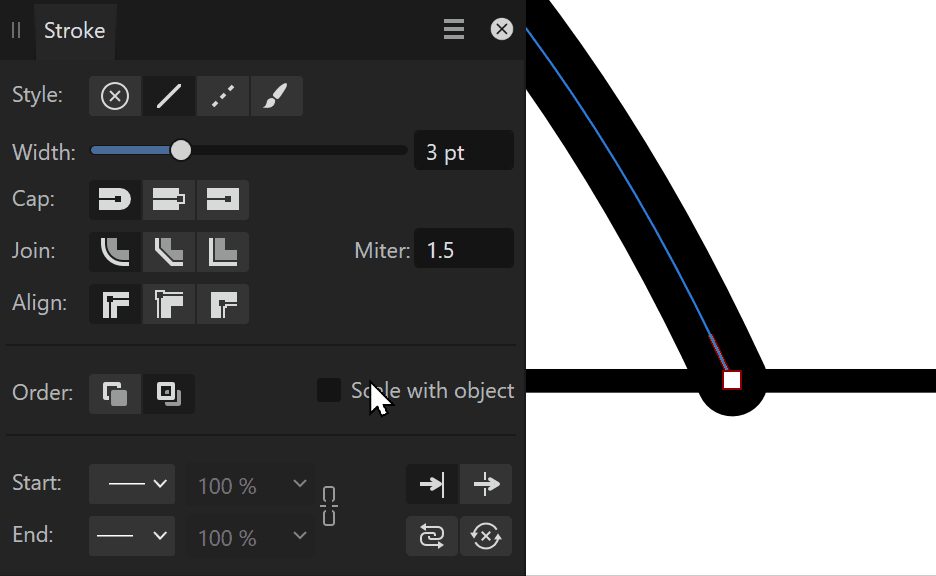-
Posts
1,797 -
Joined
Everything posted by Aammppaa
-

AD2: Bind Slice to Artboard
Aammppaa replied to D.VE's topic in Affinity on Desktop Questions (macOS and Windows)
Use Symbols? Create your artwork as a Symbol, and then create your various artboards (Portrait, Landscape, Square, Small, etc) with a copy of the symbol on each. Here's a simple example in Designer v2... Artwork Symbol with Multiple Artboards Example.afdesign -
I know this is an old thread, but it popped up in my search results today, and piqued my interest. I can't see a way of achieving your desired result without using multiple copies of the texture and HSL adjustment. But you can at least ensure that all the copies react to each adjustment by using Symbols (in Designer) or Linked Layers (in Photo). They are essentially the same feature, but I personally find the interface of Linked Layers more powerful and easier to comprehend. Linked Layers for Export Example.afphoto.afdesign
-

Converting to curves
Aammppaa replied to 11aadams's topic in Affinity on Desktop Questions (macOS and Windows)
What you are asking for is a Bitmap Tracer. Affinity does not have one, but there are plenty of others out there that you can use. See... I just tried https://vectorizer.ai with your image and got reasonable results, with little fiddling. The drop shadow causes some issues as it has a soft edge, so you may wish to remove that, and reapply after the tracing. You might also find an SVG generator that already makes Perlin noise pattern. -
Thanks Dan. I was hoping to find details of which gestures are available when using graphics tablet (Wacom Intuos Pro). I have not probed too deeply, but at the moment the pinch gesture scrolls vertically rather than zooms, and the rotation gesture is painfully slow. But perhaps I need to look for settings in the Wacom control panel rather than Affinity?
-
Yes. Version 2 adds several new types of mask. From the help... Other mask types Apart from the default mask and empty mask, Affinity Photo 2 introduces additional masking options. These are available via the Layers panel and offer more control over the edit depending on the desired workflow and outcome. The following additional mask types are available: Compound Mask—a powerful masking system that uses boolean operators to combine masks non-destructively. Luminosity Range Mask—a live, non-destructive mask that targets pixels based on their luminosity value. Hue Range Mask—a live, non-destructive mask that targets pixels based on hue. Band-pass Mask—a live, non-destructive mask that targets pixels based on a configurable frequency band, used in a range of sharpening techniques.
-

Layer effects - add border effect
Aammppaa replied to pfi's topic in Feedback for the Affinity V2 Suite of Products
As I say, I am not sure I understand exactly what you are trying to achieve... but here is a file with a few variants of erase strokes, used to create a ragged border to an image or shape. Also... why is a separate overlaid shape such a problem in your workflow? Different ragged borders could easily be stored as Assets, and then dragged over your image, snapped into place, to add any erase border you like. Affinity Erase Strokes.afdesign -

Layer effects - add border effect
Aammppaa replied to pfi's topic in Feedback for the Affinity V2 Suite of Products
@kirk23 perhaps I don't understand your comment... but strokes can have the Erase blend mode, which does allow for easy creation of ragged borders. Can you show an image of what you are trying to create? -

Develope Persona
Aammppaa replied to MartinSchneiderLau's topic in Affinity on Desktop Questions (macOS and Windows)
This post might be of help... -
You say this as if it is a bad or complicated thing? Perhaps I am not fully understanding what you want to create, or how you intend to use it. But if all you need is a grid of squares, each of which has a different colour, then you can use the Quick Grid feature to make your array of squares in a couple of seconds.
-
I think the overcast day actually made for great images. The coloured smoke against the dark stormy sky is particularly effective.
-
Hi @Gideon S. It's generally not helpful to revive old threads - especially not those that are so ancient. Instead I'd suggest you start a new post with your own issue / query, and I'm sure you will get better help. It would be especially helpful to include a video / screenshots of exactly what you are doing, as the basic technique of nesting an image inside a clipping shape should work every time. Perhaps this guide helps?
-
The parallelogram shows that the gradient has been sheared / skewed / rotated from the position in which it was originally created. This can be helpful if you have several objects that are supposed to have the same gradient (but no longer do). If you are happy to accept the new distorted gradient, then a double click on any handle of the parallelogram will remove the additional handles.
-
Circles in Affinity are not true circles, but approximations of circles created from 4 Bezier curves. So at some rotations the 'circle' is wider / taller than at others. I suspect that this is what we are seeing here. Perhaps when only a single circle is selected Affinity is smart enough to know that it is supposed to be a true circle, and so lies about the true size? But when two objects are selected it can't lie about both! EDIT: Also I notice it doesn't seem to happen with other units (I tried mm).
-

Shape Builder not working properly (or is it me?)
Aammppaa replied to DamijanI's topic in V2 Bugs found on Windows
There shouldn't be any need to have a stroke or fill for the Shapebuilder to work. @Dan C I can confirm @CRWillow's bug on Windows 10, Designer 2.1.1 with a stroke. File attached with history. Shapebuilder Yin Yang Bug with History.afdesign -
Hi @icetea, and welcome to the forum. So, first suggestion... don't draw the triangle as 3 separate lines, rather as one continuous polyline, which will result in a closed curve (or shape). See the help to find out more about Polylines. https://affinity.help/designer2ipad/English.lproj/pages/CurvesShapes/draw_linesAndShapes.html I'd also suggest watching a tutorial or two about using the pen tool, creating shapes, etc. https://www.youtube.com/watch?v=XtvVEv5udVA Secondly... a single node can only ever connect to two other nodes, so your attempt to merge the two triangles is impossible, as you'd be asking a single node to connect to four others. Why do you need to join the nodes anyway? If you want the two triangles to move together, just group them. Hope these pointers help!
-
There are many solutions to this, and they all have their advantages and disadvantages. Which you choose will depend on the number of times you need to trim lines in this way, the likelyhood that you need to alter them in the future, and any other requirements (such as needing a purely vector output, or needing strokes vs shapes). 1. Expand stroke (as suggested by @R C-R) 2. Erase using Erase blend mode (suggested by @firstdefence) 3.Transparency Tool - Use the transparency to hide the end of the stroke. 4. Clipping Shape - Use the pen tool to draw a clipping shape... - Start at the intersection of the two lines, and ensure you completely surround the target stroke. - Nest the wider stroke inside the clipping shape. 5. Bend the Stroke - Change the stroke cap to Butt Cap. - With the node tool, create a new node where the two lines first intersect. - Remove unwanted handles with Alt + Click. - Move the final node to bend the stroke so that the end cap is parallel to the intersecting line. 6. Pixel Eraser - Switch to Pixel persona. - Use the Eraser to erase the end of the line.
-

Shape Builder not working properly (or is it me?)
Aammppaa replied to DamijanI's topic in V2 Bugs found on Windows
The fact that you are getting little stars suggests to me that your lines were not perfectly aligned to start with. Those tiny overlaps always existed, and were probably what is tripping up the Shape Builder. How did you create your grid? I used a Triangle Grid, with Snap to grid enabled, and things worked well. I did get one stray line left in a resulting shape, but that was easily deleted. Post your files if you want someone to experiment with your design. For what it is worth, I tried out both examples, and with minimal fiddling was able to get both to work. Also I find the Illustrator example to be very inefficient, and would suggest only making ¼ of the knot, then using Symbols to fill in the other ¾ automatically. -

Perspective grid/guides - surely?
Aammppaa replied to JP1's topic in Affinity on Desktop Questions (macOS and Windows)
I don't think that the Affinity apps currently create dynamic grids, based off percentages. But that doesn't mean you can't do it yourself very easily. And it only needs doing once for any given grid. For example, I want a grid that always gives me thirds... Draw a square. Power duplicate 2 more to make a row. Power duplicate 2 more rows to make an array. Select all and group. Name "Thirds Grid". Save as an asset (perhaps make a Category called Grids!) Now, any time you want thirds of anything, just drag your thirds grid asset onto the canvas, and snap it to your points of interest. It will take you a few minutes to create a set of common sizes, which you can reuse for ever.






